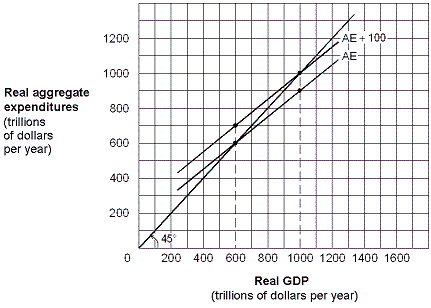Exhibit 9-8 Keynesian aggregate-expenditures model  In Exhibit 9-8, an increase in aggregate expenditures causes:
In Exhibit 9-8, an increase in aggregate expenditures causes:
A) a movement down the aggregate demand curve from equilibrium real GDP $600 to equilibrium real GDP $1,000.
B) a movement up the aggregate demand curve from equilibrium real GDP $1,200 to equilibrium real GDP $1,000.
C) a shift of the aggregate demand curve to the right, causing equilibrium real GDP to increase from $600 to $1,000.
D) a shift of the aggregate demand curve to the left, causing equilibrium real GDP to decrease from $1,200 to $1,000.
E) no change in equilibrium real GDP.
Correct Answer:
Verified
Q88: Using the aggregate expenditure-output model, assume the
Q157: In the aggregate expenditures model, a decrease
Q158: Exhibit 9-5 Keynesian aggregate-expenditures model where the
Q160: Use the aggregate expenditures model and assume
Q161: In the aggregate expenditures model, if an
Q163: In the aggregate expenditures model, if aggregate
Q164: Exhibit 9-8 Keynesian aggregate-expenditures model 
Q165: Exhibit 9-7 Keynesian aggregate-expenditures model 
Q166: If firms increase their investment spending by
Q167: Exhibit 9-8 Keynesian aggregate-expenditures model 
Unlock this Answer For Free Now!
View this answer and more for free by performing one of the following actions

Scan the QR code to install the App and get 2 free unlocks

Unlock quizzes for free by uploading documents